Food is a love language that requires no translation. It fills your stomach, incorporates all five senses, forms connections, and creates memories. And in cities like Sao Paulo, whose culinary offerings are known worldwide, you can’t miss trying its local delicacies. This Brazilian city’s culinary scene embraces its traditional roots and incorporates African and European influences. Japanese, Lebanese, and Syrian immigrants have added Middle Eastern and Asian cuisines to this city’s diverse food scene. If you are a foodie or a first-time visitor, this blog is for you. We are listing the Must-Try Street Food in Sao Paulo.
Also Read:
- Taipei Street Food and Where To Get Them
- Food in Bucharest, Romania, and the Best Restaurants in Bucharest
- Top 15 Street Foods in Egypt
Pastel
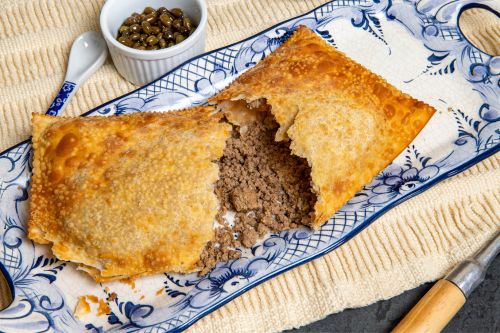
- Where To Eat: Pastel Da Maria, Pastel da Mi, Pastelaria Yoka
- Price Range: $10.99 to $14.99
We begin our list with delicious Pastel, a typical street food in Brazil. This deep-fried pastry is usually rectangular or half-circle in shape with a thin crust. It has hearty fillings of ground beef, cheese, codfish, chicken, shrimp, and tomatoes. This street snack is available in sweet and savory versions. Pastries with sweet fillings have guava paste with Minas cheese or a chocolate and banana combo. The best part of this dish is adding whatever filling you want. While Chinese immigrants were the ones who created Pastel, Japanese immigrants popularized the recipe. You can find this dish in the vibrant Liberdade neighborhood.
Coxinha
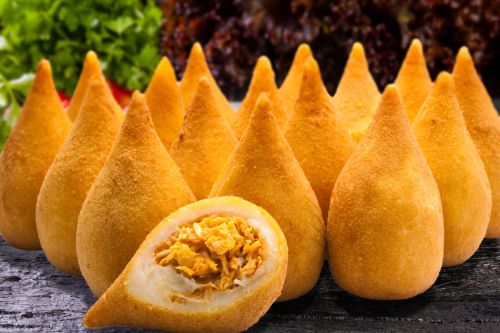
- Where To Eat: Santa Coxinha, Clube da Coxinha, Coxinha Brasil – Centro
- Price Range: R$3.5 – R$9
Coxinha is a famous Brazilian street food whose origin dates back several centuries. It was initially made with parts of chicken deemed less desirable to prevent wastage. The modern version of Coxinha likely came from Limeria in the 19th century. It is a tear-shaped mold consisting of shredded chicken meat that is battered and fried. This savory snack also looks like a chicken drumstick and is crunchy and juicy. In addition to meat, chefs add cheese, onions, scallions, and parsley as fillings.
Pão de Queijo

- Where To Eat: Casa Do Pão de Queijo, Haddock Lobo Cheese Bread, Cheese Bread House
- Price Range: R$7.90 – R$66 ($1.32-$11)
The craze of Pão de Queijo is real in Sao Paulo. These Brazilian cheese balls are the go-to breakfast food in Brazil. You will find this inexpensive snack in almost all streetside vendors or food stalls. This cheese ball is easy to make, requiring cassava or tapioca flour, eggs, milk, cheese (Parmesan or Minas Caastra), salt, oil, and water. Tapioca flour is an excellent alternative to wheat flour and is gluten-free. After mixing all the elements, these cheese puffs are baked in the oven for 15-20 minutes. The results are chewy, crispy, and cheesy balls that are best eaten hot.
Acarajé
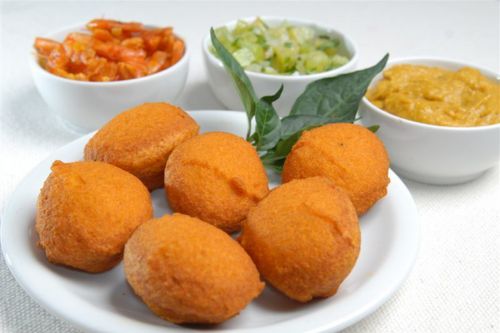
- Where To Eat: Tabuleiro do Acarajé, Rota do Acarajé, Acarajé da Baiana de Ilhéus
- Price Range: R$1 – R$10
We have another gluten-free street snack on our list. Acarajé are delicious filters made from seasoned black-eyed peas. After deep-frying, they are split in half and filled with vatapa (made from bread, shrimp, peanuts, and coconut milk) and caruru (made from okra, shrimp, onion, palm oil, and toasted nuts). This dish came from the northeastern state of Bahia. It is primarily found in the state’s city of Salvador. This street snack is also a religious offering in the Candomblé region.
Bauru
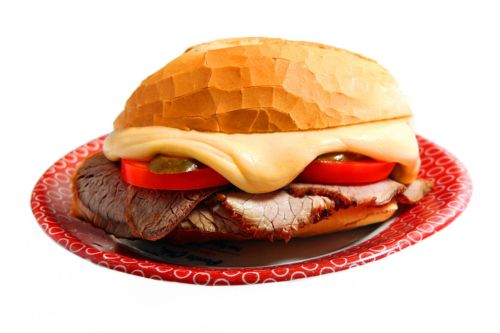
- Where To Eat: Ponto Chic
- Price Range: R$42.90 onwards
There is a unique history behind Sao Paulo’s infamous Bauru sandwich. Law student Casemiro Pinto Neto once visited the Ponto Chic restaurant and requested the chef to prepare an off-menu sandwich to his specifications. Surprisingly, his ordered sandwich was an instant hit and received a memorable name: Bauru due to Neto’s Bauru origin. This dish is still a specialty at Ponto Chic and consists of French bread with thin slices of cold roast beef, pickled cucumber, and sliced tomatoes. The highlight of Bauru is its melted cheese (a mix of 4 types of processed cheese).
Feijoada
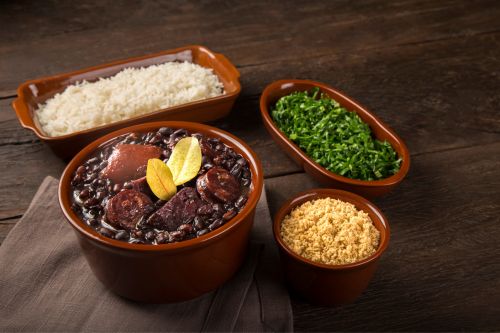
- Where To Eat: Feijoada da Lana, A Feijoada da Norma, Bolinha
- Price Range: R$90 onwards
Brazil’s national dish, Feijoada, is not exactly a street food, but you will find it in almost all street stands and vendors. It is a bean stew available in vegetarian and non-vegetarian options. The non-vegetarian Feijoada consists of a black bean stew with pork and beef. It is usually served with white rice, farofa, sliced oranges, sauteed kale, and other side dishes. This dish is strong-flavored, moderately salty, and nutritious. Or, you can opt for Caldinho de feijão, a simpler version of Feijoada easily found in bars.
Mortadella Sandwich
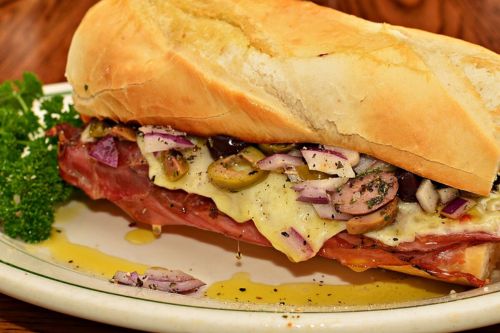
(Source: Wikimedia Commons)
- Where To Eat: Mortadela Brasil, Casa da Mortadela, Bar do Mané
- Price Range: R$11 – R$15 ($1.84-$2.51)
Who doesn’t love sandwiches? And we have our winner, the famous Brazilian Mortadella Sandwich. This sandwich features nearly a half pound of mortadella (a large Italian sausage), melted cheese, lettuce, and tomato. Its impressive size is one of the reasons behind its increasing popularity. That being said, you might have trouble finishing one all by yourself. You can find mortadella sandwiches in street stands, snack bars, and local restaurants in Sao Paulo. The price varies depending on the location.
Cachorro-Quente
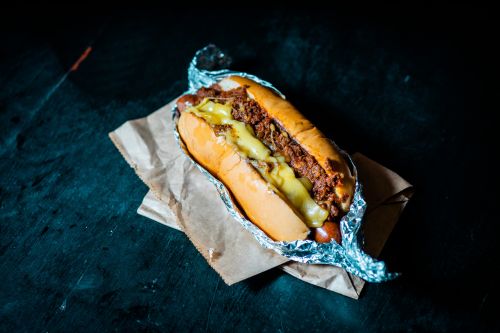
- Where To Eat: Black Dog Paulista, Dog do Betão, The Dog Haus
- Price Range: R$16 onwards
Almost everyone has tried hot dogs at least once. How about trying Brazilian hot dogs, Cachorro-Quente? They are entirely different than the ones sold in the US. The sausages are cooked in tomato sauce before being placed in the bun. Moreover, the process of preparing Cachorro-Quente differs from region to region. Sao Paulo uses mashed potatoes, while Rio de Janeiro uses quail eggs as toppings. Some Brazilian states serve these hot dogs with corn and straw potatoes. Hence, you must try this street snack at least once and see whether it tastes better or worse.
Bolinhos de Bacalhau
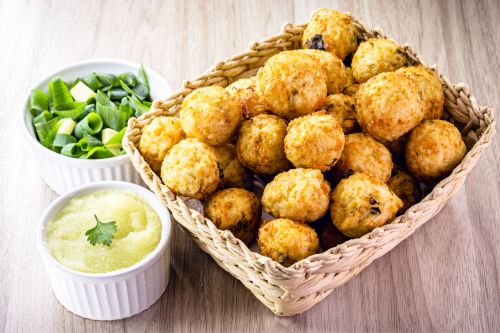
- Where To Eat: Dona Silvana Bolinhos de Bacalhau, A Bela Sintra, Casa Bolinho de Bacalhau
- Price Range: R$119.90/kg onwards
Many cuisines, including Portuguese cuisine, influence Sao Paulo’s rich culinary scene. Bolinhos de Bacalhau is a perfect example. This Portuguese dish has become a household dish in the city. First, mince the cooked cod meat, boiled potatoes, and chopped parsley together. Next, mix the batter with milk and egg yolks with seasonings, shape them, and deep fry them. The result is crispy, savory, and delicious Bolinhos de Bacalhau. Pastel de Bacalhau is the Brazilian version of codfish cakes.
Kibbeh
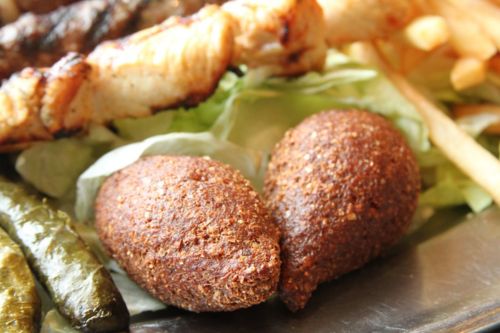
- Where To Eat: Lebanon Food Augusta, Shuk Falafel & Kebabs, Al Amirat Casa Da Esfiha, Brasserie Victória
- Price Range: R$9 – R$18.50 ($1.50-$3.10)
Let’s move to Middle Eastern cuisine this time. Kibbeh is the must-try street food in Sao Paulo, originating in Lebanon and Syria. The Lebanese and Syrian immigrants introduced this dish, becoming an instant hit among original Sao Paulo residents. This traditional Middle Eastern dish consists of minced beef or lamb meat ground and bulgur wheat into a fine paste. It is mixed with toasted pine nuts and spices, given an oval shape, and deep-fried, baked, grilled, or served raw.
Esfiha
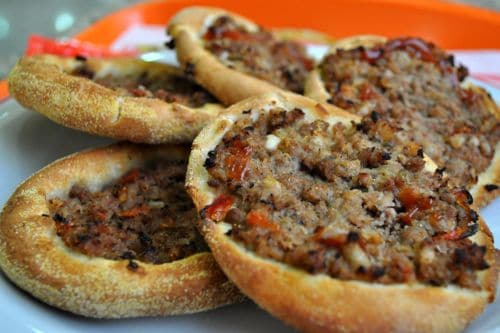
- Where To Eat: Brasserie Victoria, Esfiha Imigrantes, Esfiha Vergueiro
- Price Range: R$7.80 onwards ($1.31~)
Next, Esfiha is a Lebanese dish by Brazil’s Lebanese and Syrian immigrants. This Middle Eastern dish consists of flatbread cooked with meat, vegetables, and cheese. Brazilian Esfihas are often served open-face or folded into a triangular shape. They have hearty toppings of lamb and beef meat, vegetables, curd, and cheese. You can enjoy this delicious Levante specialty in Lebanese and Arabian restaurants in Sao Paulo.
Churros
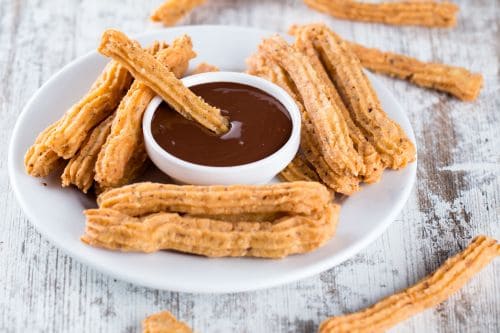
- Where To Eat: A Casa do Churro, Amor de Churros, Chucrê Churros
- Price Range: R$38 onwards ($6.36~)
We have discussed savory dishes so far on our list; it’s time for desserts. Churros are sweet street snacks in Europe and America. They are also famous in Brazilian cities like Sao Paulo. Brazilian churros consist of fried yeast dough filled with dulce de leche and dusted with cinnamon and sugar. Spanish churros use choux pastry and have chocolate or condensed milk fillings. The result is a delicious sweet treat with a crispy outside and a gooey center.
Brazilian Tapioca

- Where To Eat: Beiju Tapiocas, Açaí e Tapiocaria T&B, Tapiocaria do Smith
- Price Range: R$11.99 onwards
Next, Brazilian Tapioca is a gluten-free crepe made of Tapioca starch/manioc flour, salt, water, and intended fillings. It is also known as manioc, yuca, or cassava. Add savory (scrambled eggs, avocado, and cheese) or sweet (grated coconut, condensed milk, butter, and cheese) fillings. These delicious crepes can be a breakfast, afternoon snack, or meal. In addition to being gluten-free, these crepes have many nutritional value and health benefits, such as helping to lose weight, treating diarrhea, and removing scars.
Açaí na tigela

- Where To Eat: Frutaria São Paulo, Açaí Original, Açaí do Trevo Anchieta
- Price Range: $3 – $25
You can never go wrong with Açaí na Tigela (Açaí in the bowl). This sweet Brazilian street food resembles ice cream and consists of frozen and mashed açaí berries. It comes as a smoothie, mixed with guarana syrup, and topped with granola and banana. This dessert originated in Para and Amazonas and is available in almost all Brazilian states. It is refreshing and has an earthy, creamy, acidic, and tart taste.
Brigadeiro

- Where To Eat: Brigadeiro Brasil, Brigadeiro Doceria & Cafe – Shop 1, Ponto de Brigadeiro
- Price Range: $4.9 onwards
Finally, Brigadeiro is a must-try street food in Sao Paulo. It looks like a cupcake with chocolate sprinkles at the top. This dish only requires a few ingredients: condensed milk, butter, cocoa powder, and chocolate sprinkles. It also has an interesting origin. During Air Force Brigadier Eduardo Gomes’s presidential campaign in the 1940s, his wife, Heloísa Nabuco de Oliveira, created these sweet treats and served them at his fundraisers. While Gomes didn’t win the 1946 Presidential Election, Brigadeiro became integral to Brazilian cuisine.
Sao Paulo’s rich food scene has a little bit of everything. Many street snacks are available if you have a sweet tooth or want something savory. In addition to vegetarian options, some dishes, like tapioca crepes, cater to a gluten-free dietary requirement. Likewise, you can savor authentic Brazilian dishes or try Italian, Middle Eastern, and Asian cooking. And the best part of these street foods is they are relatively cheap. You can find many street snacks for $2 – $3; eating out won’t drain your wallet in this Brazilian city.
 Chat with AI about Sao Paulo Food Tours
Chat with AI about Sao Paulo Food Tours

